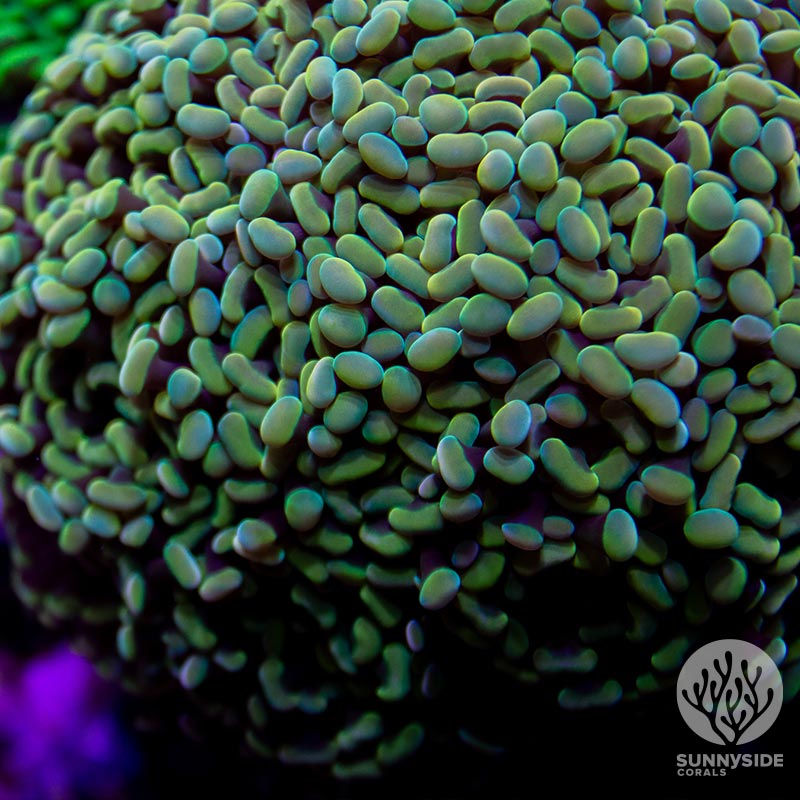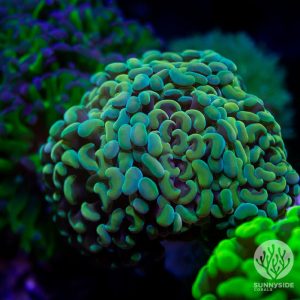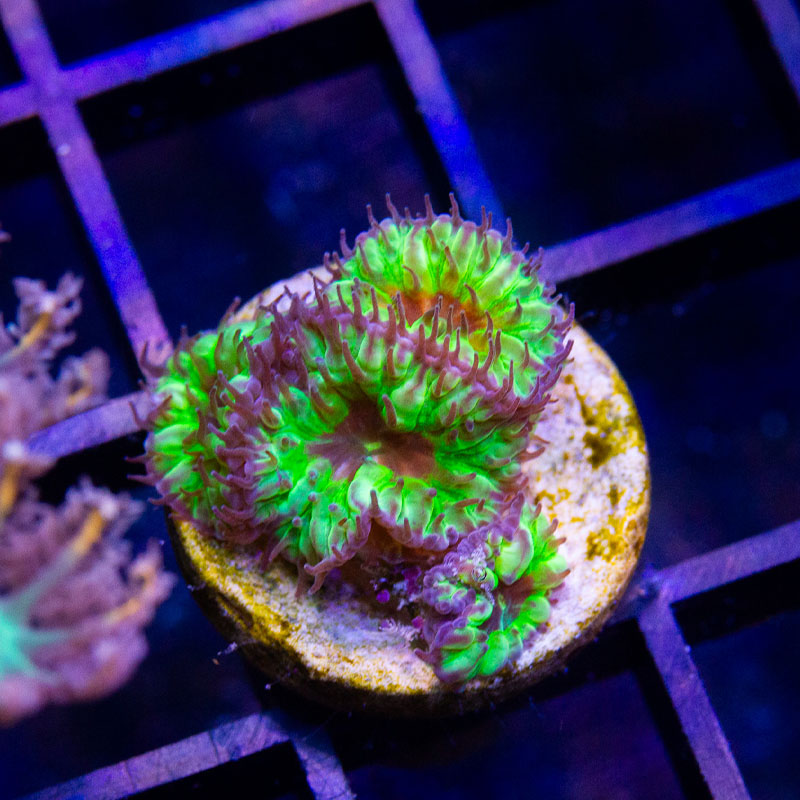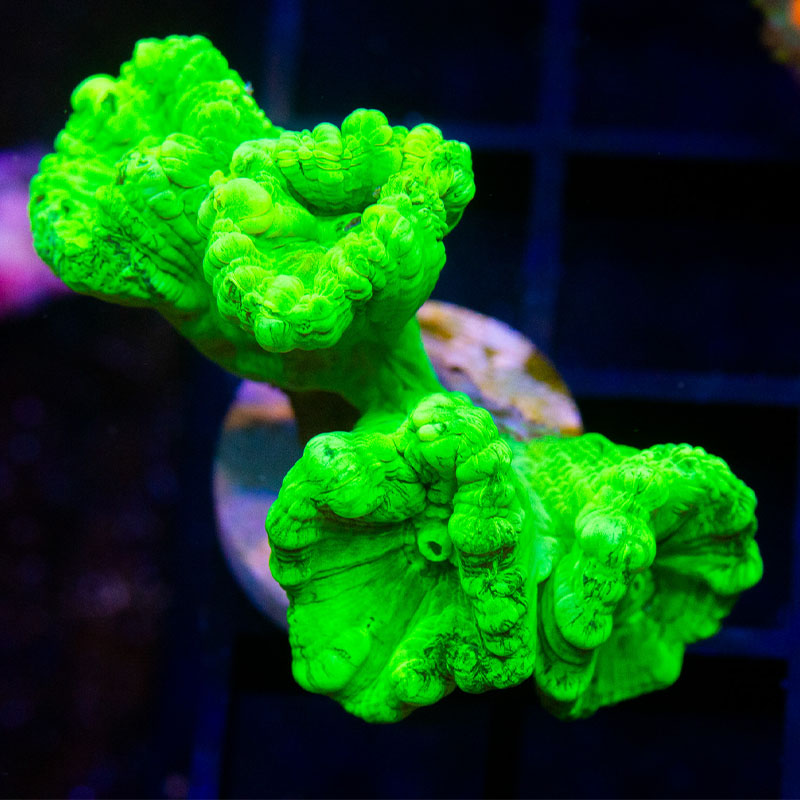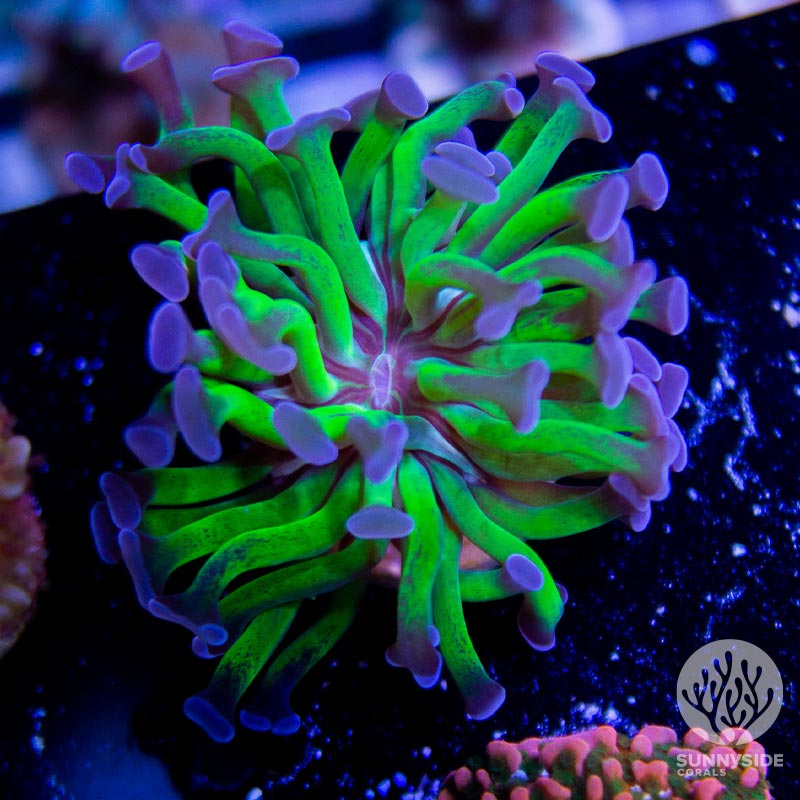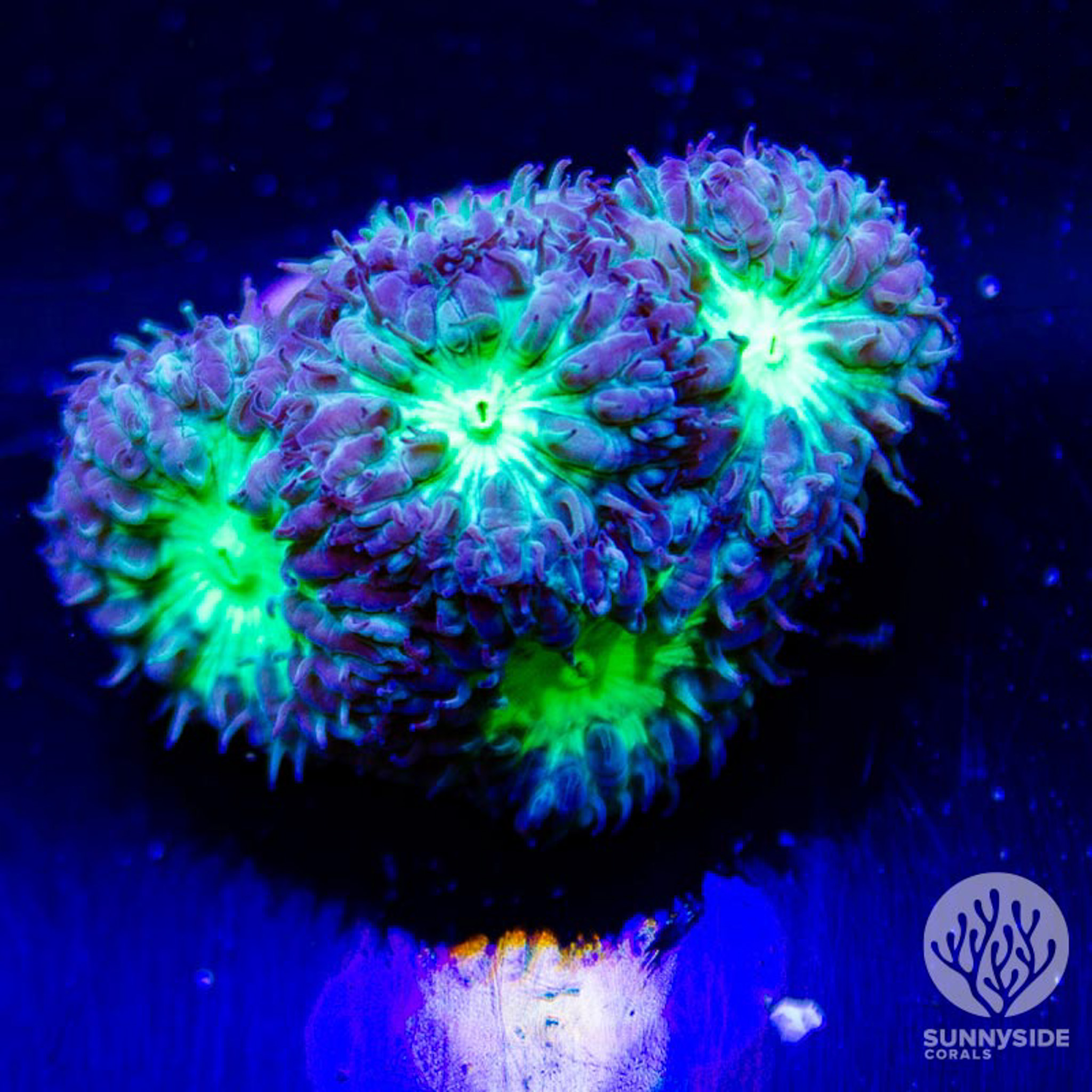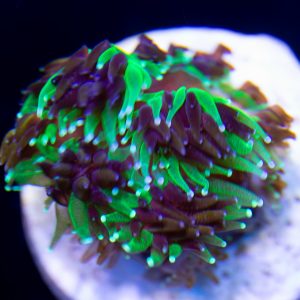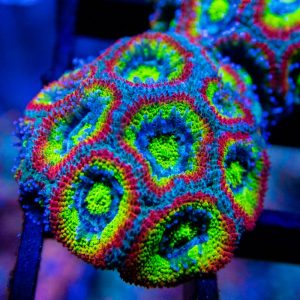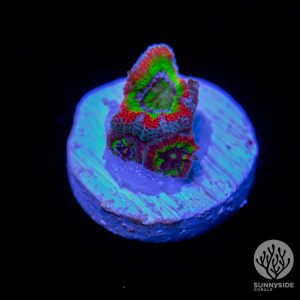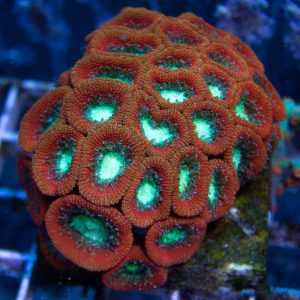What are LPS corals?
There are two main classifications of Hard Corals. One is the Small Polyp Stony Corals or often referred to as SPS Coral. The other classification of Hard Corals are Large Polyp Stony Corals, also known as LPS Coral. LPS are often identified by their soft fleshy body with large polyps or mouths. Each mouth or polyps is its own organism but grows together to form a colony.
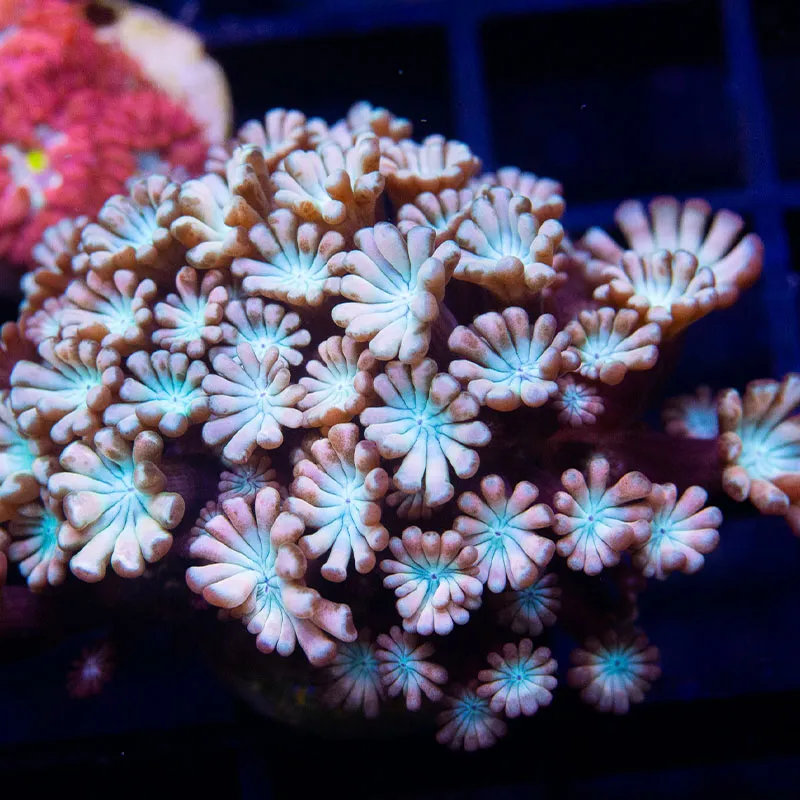
Coral Care
Lighting
LPS corals can vary on how much light they require. Typically LPS corals do best under low to medium amounts of light and thrive at the bottom or sides of the tank where the light is not as direct. We run a slightly modified A/B schedule with gen 4 Radions and supplement T-5 lighting for all of our LPS corals.
Flow
In general LPS corals do best under low to medium amounts of flow. Be sure to research the specific type of coral that you are interested in to know how to best place it.
Placement
When placing LPS coral keep in mind the amount of flow and lighting that the coral will receive. You can always move the coral after a short period of time if it does not seem to be doing well. There is no perfect placement with any coral and each tank will be slightly different.
Dosing
Dosing can make growing LPS coral a lot easier. A dosing system automatically adds small amounts of chemicals into the water to help maintain and replenish your tank parameters. By dosing small amounts of Alkalinity, Calcium, and Magnesium you can make sure your tank has steady levels that are optimal for growing LPS corals.
How to increase growth
The key to increasing LPS coral growth in your tank is to make sure your tank is consistent. Once you find a spot in your tank where your corals are happy, don’t move them. If you keep your parameters consistent and have adequate light and flow, your LPS corals will start to thrive. LPS corals also tend to do well in a slightly dirtier tank, meaning, it has slightly elevated Phosphates and Nitrates.
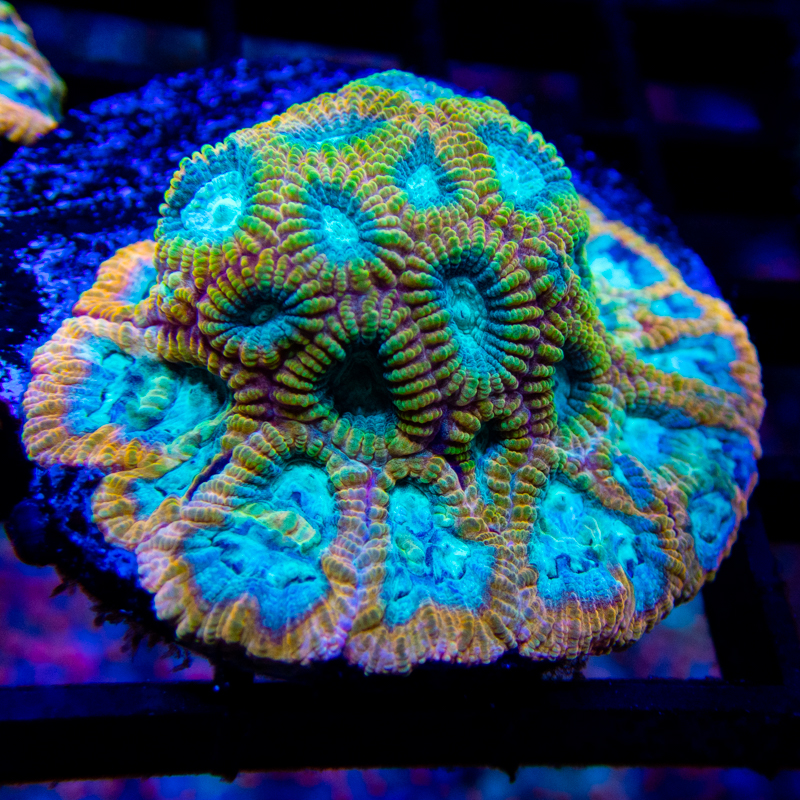
Before You Buy
LPS corals are a great option for anyone getting into the hobby, starting a new tank, or just doesn’t want to deal with the amount of upkeep that SPS corals need. LPS corals can be fairly hands-off and low maintenance once your parameters are stable. LPS corals will be more likely to survive a swing in tank levels and that makes them perfect for testing out new systems.
Large Stony Polyp corals feed by reaching out with their tentacles and bringing floating debris into their months. They grow by absorbing Magnesium, Calcium, and Alkalinity. As your tank becomes more full with corals, you may want to consider buying a doser to supplement the amount of Alk, Mag, and Calc being consumed by your corals as they grow.
Other important factors that play a role in the success of growing LPS corals are the correct amount of lighting and flow. At Sunnyside Corals, we run a modified AB schedule with Gen 4 radions and supplement T-5 lighting on our LPS corals. Our LPS corals typically grow best under medium to low light. Be careful not to over-expose your LPS corals to light or they will start to bleach. Typically at the bottom of your tank or on the edges of your tank are the best spots for your LPS corals.
Overall LPS corals are a great choice and can be very rewarding. Some LPS corals are touchier than others as well as have different growth rates. Please be aware of the needs of the specific type of LPS coral when buying.
When can I add LPS coral to my tank?
Knowing when to start adding coral to your tank can be tricky. Lucky LPS corals typically are more resilient and can be good options for new tanks. Here are some of the key things to consider when thinking about adding LPS corals to your own tank.
Dry Rock
If you started your tank with dry rock you will most likely have to wait 3 to 6 months before you will be able to successfully keep LPS coral alive. This is because dry rock can leach phosphate into the water for a very long time. LPS corals do well in slightly elevated Phosphate and Nitrate levels and will be a good option for you to test if your tank is ready and your parameters have stabilized.
Live Rock
If you started your tank with live rock that process can be dramatically shorter. However, be aware that just because your levels are where they should be, does not mean that your tank is actually ready for any corals. We recommend introducing LPS or Softy corals slowly and monitoring them closely with any new system.
LPS FAQs
What is lps coral?
Large Polyp Stony Corals, also known as LPS Coral. LPS are often identified by their soft fleshy body with large polyps or mouths. Each mouth or polyps is its own organism but grows together to form a colony.
Are LPS good for beginners?
In general LPS corals are perfect for beginners. Not all LPS corals are going to be easy to keep but some of our favorites are our Aussie Duncans, Green Alien Eye Mycedium, and Frogspawn.
LPS coral for beginners.
Some of our favorites are the Green Alien Eye Mycedium, Frogspawn, Molten lepto, Blasto Merletti, and Aussie Duncans.
Are LPS corals hard to keep?
LPS Corals are one of the easiest types of corals to grow. They are a great option for anyone getting into the hobby, starting a new tank, or just doesn’t watn to deal with the amount of upkeep that SPS corals need.
How to dip lps coral?
We recommend that you use Bayer Advanced Complete Insect Killer when dipping LPS corals. It does that best job with the least amount of harm to your corals in our experience.
Do lps corals need dosing?
Like all other types of corals, once LPS corals start to grow you will want to start dosing to keep your tank parameters stable. As your corals grow they consume key elements such as Calcium and Alkalinity.
How to color up lps coral?
In order to color up your LPS corals, you need to try to lower your nutrients slightly and increase blue lighting in your tank. You can copy our exact lighting schedule here that we use to bring out the best colors in our corals.
What to feed lps corals?
LPS corals can be broad fed or fed directly with something like a turkey baster. We broad feed our corals by feeding our fish a mix of frozen foods containing mysis shrimp and pellet food.
